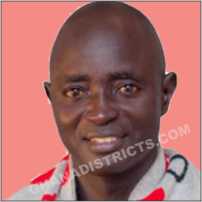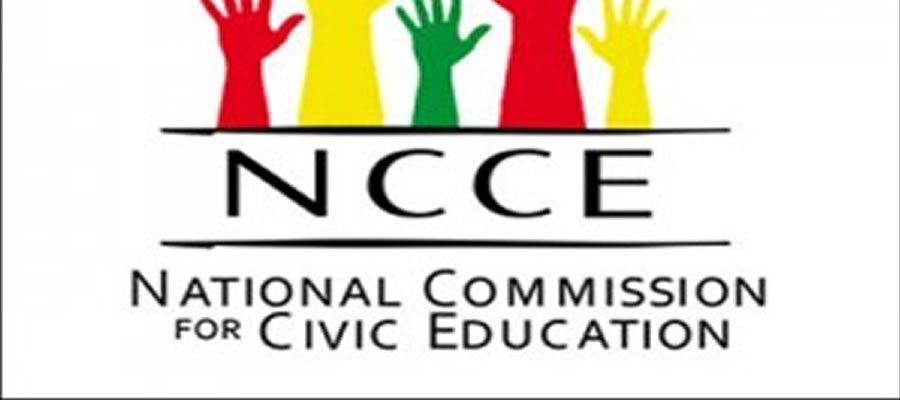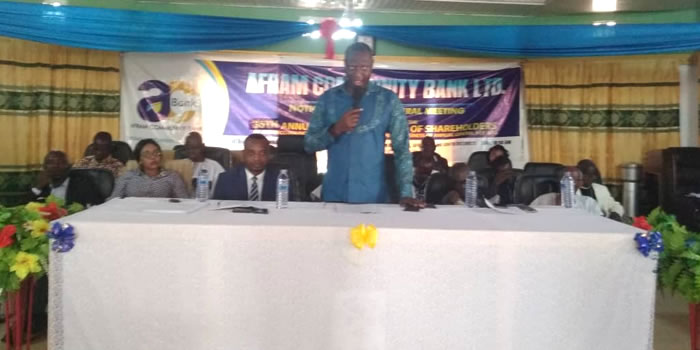

Introduction
Household as defined by the 2010 PHC refers to “a person or group of persons, who lived together in the same house or compound and shared the same housekeeping arrangements”. People in a particular household may not be related by blood but could be friends or domestic workers who have a recognizable head. In Ghana, households may comprise of extended or nuclear families members.
The culture of Ghanaians tracing their relationship to either the extended or nuclear family ties brings about variations in family size, structure and composition. The structure, composition, and size differ among the various ethnic groups in Ghana based on the prevailing kinship and the two broad descent and inheritance systems, namely, the matrilineal and matrilineal systems. This chapter analyzes of data on the social characteristics in the Afram Plains South District from the 2010 Population and Housing Census.
Household Size, Composition and Headship Household size
Table 3.1a indicates that there are 25,007 households in the Afram Plains South district with nearly more than seventy percent (74.1%) in the rural areas compared with 25.9 percent in the urban areas. The average household per house for the district according to the 2010 census is 1.1 with the urban areas recording a greater number than the rural areas implying that there are more persons in a house in those settings than in the rural areas.
The average household size for the district is 4.3 comparing with 4 for the region as a whole and interestingly the average household size for the urban area is same for the total district.
Household composition and structure
The general wellbeing of household members can be linked to household size. This is because resources availability and access to household members may be determined by the size. The information on household composition is also important for planning purposes in providing social amenities and other services for households.
Marital status
Marital status is one of the social characteristics of a population that is determined by biological, social, economic, legal and, in many cases have religious influence. Marriage can be defined to include formal unions that are legally, traditionally or religiously approved as well as cohabiting unions between individuals or families for the purposes of companionship or procreation. In Ghana the statutory minimum age at marriage is 18 years as stipulated in the 1992 Constitution. However, females below the prescribe age have been given into marriage in traditional settings as a cultural practice. The 2010 PHC captured data on marital status for household members aged 12 and above.
The marital status of the people in Afram Plains South district is presented in Table 3.3. The population aged 12 years and older is 74,605. From Table 3.3, 36.5 percent are never married, 51.3 percent are married, 2.8 percent are widowed and three percent are divorced. The age group with the highest number of married persons (80.6%) is 40-44. However, separated persons are highest among ages 55-59.
Table 3.3 also shows that more females 65 years and older are widowed (42.9%) to their male counterparts (8.9%). Inference can be drawn from these statistics that mortality rate seems to be on the increase among married males as they advance in age than their females counterparts. Figures from Table 3.3 also show that 10.5 percent of females in age-group 20-24 are in consensual union.
Level of Education and Marital status
Table 3.4 presents data on level of education for persons 12 years and older by sex and marital status. The total population for all levels of education is 74,605 with 40,947(54.9%) males and 33,658 (45.1%). The total population for both sexes who never had any form of formal education is 43.6 percent .From the table 3.4, 70.9 percent of females in informal consensual union have basic education as compared to 60.1 percent of their male counterparts. This situation shows that co-habitation begins among population 12 years and older after basic education.
About six out of ten (54.3%) of the married population for both sexes had no education. Conversely, barely 40.1 percent of the total married population attained basic education level. Table 3.4 indicates that more married males (2.3%) than females (0.5%) attained post- secondary level of education. This trend continues to the tertiary level with married males recording 0.4 percent compared to zero percent for females.
Marital status and economic activities
The marital status of a population is largely influenced by their economic status. The linkage that exists between the two variables partly determines one’s marital status. As shown in Table 3.5 for persons 12 years and older in the district, a total of 74,605 are in one marital status or the other. Out of this, there are 60,033 persons who are economically active compared to 14,572 who are economically not active. For the economically active population, 98 percent are employed against two percent who are unemployed.
For all the marital statuses in table 3.5, nine out of ten people within the population are employed. Even though majority of the never married population is economically not active for both sexes (75.2%), there are more never married males (85.7%) compared to females (64.9%).
Nationality
Nationality is defined as the country to which a person belongs. Ghanaian nationals are classified as Ghanaian by birth, by naturalization and by dual citizenship. Table 3.6 shows the nationality of the population of Afram Plains South. Ghanaians by birth constituted the largest percentage (93.2%) of the population. Also from table 3.6, Ghanaians with dual nationality and Ghanaians by naturalization have a population of (1.1%) and (1.5%) respectively. The proportion of Ghanaian by birth for male (93.1%) and female (93.1%) and female (93.3%) is almost the same. Interestingly, ECOWAS nationals form a population of (1.5%) and can be attributed to the influx of alien Fulani herdsmen into the district.
Religious Affiliation
There are about 74.6 percent of the population who reported to be Christians (Catholic, Protestant, Pentecostal/Charismatic and other Christian), followed by Islam (11.6%) and traditionalist (3.9%) as indicated in Table 3.7. About 10 percent (9.1%) indicated that they had no affiliation to any religion.
In terms of sex, there are more females (78.2%) than males (71.6%) who are Christians in table 3.7 but slightly more males (12.6%) than females (10.5%) who practice Islam. Almost eleven percent (10.8%) of males had no religious affiliation compared to (7.1%) of females. There are equal percentages for both sexes (0.7%) belonging to other religions.
Date Created : 11/26/2017 3:59:14 AM










 facebook
facebook
 twitter
twitter
 Youtube
Youtube
 +233 593 831 280
+233 593 831 280 0800 430 430
0800 430 430 GPS: GE-231-4383
GPS: GE-231-4383 info@ghanadistricts.com
info@ghanadistricts.com Box GP1044, Accra, Ghana
Box GP1044, Accra, Ghana